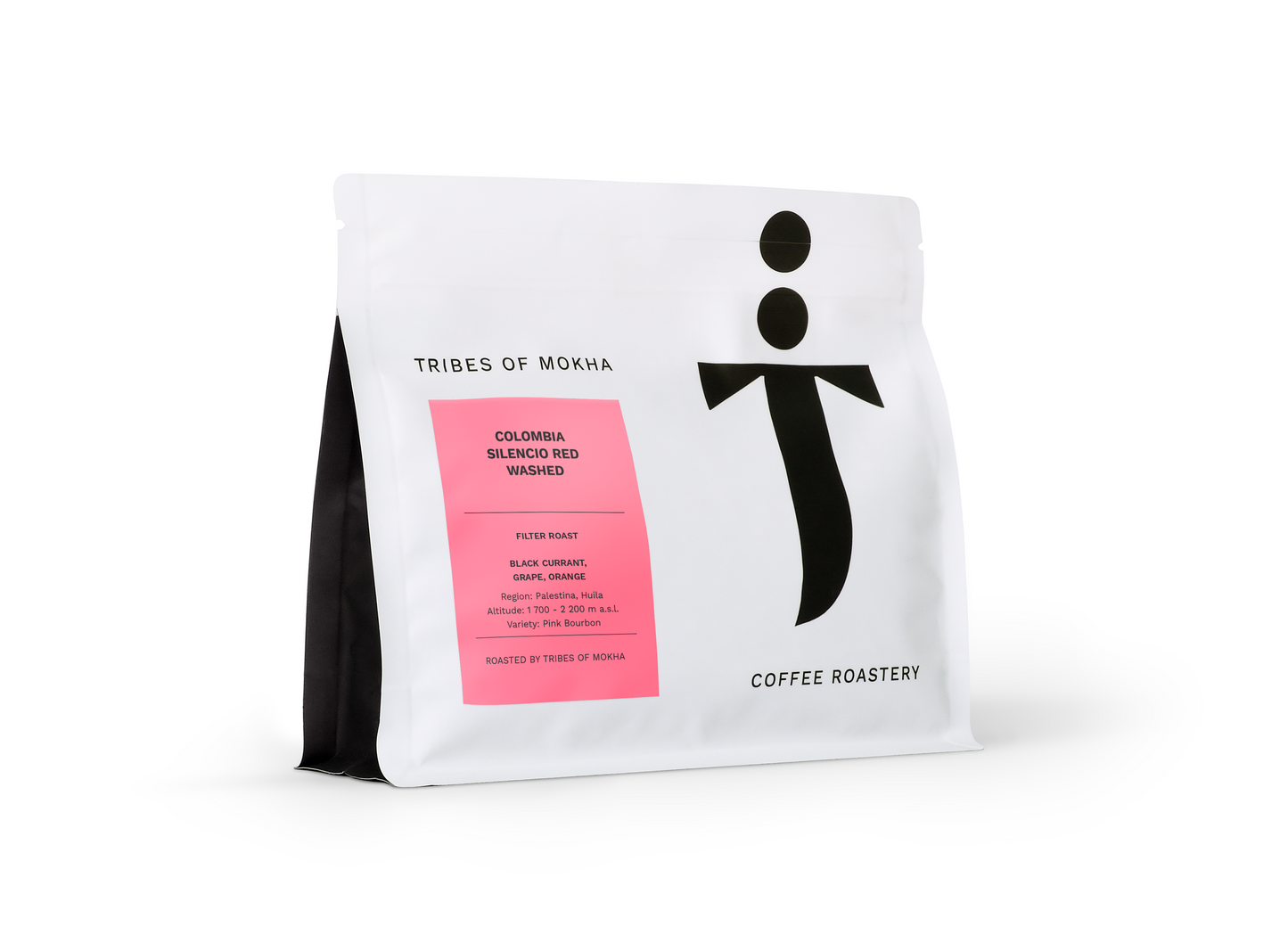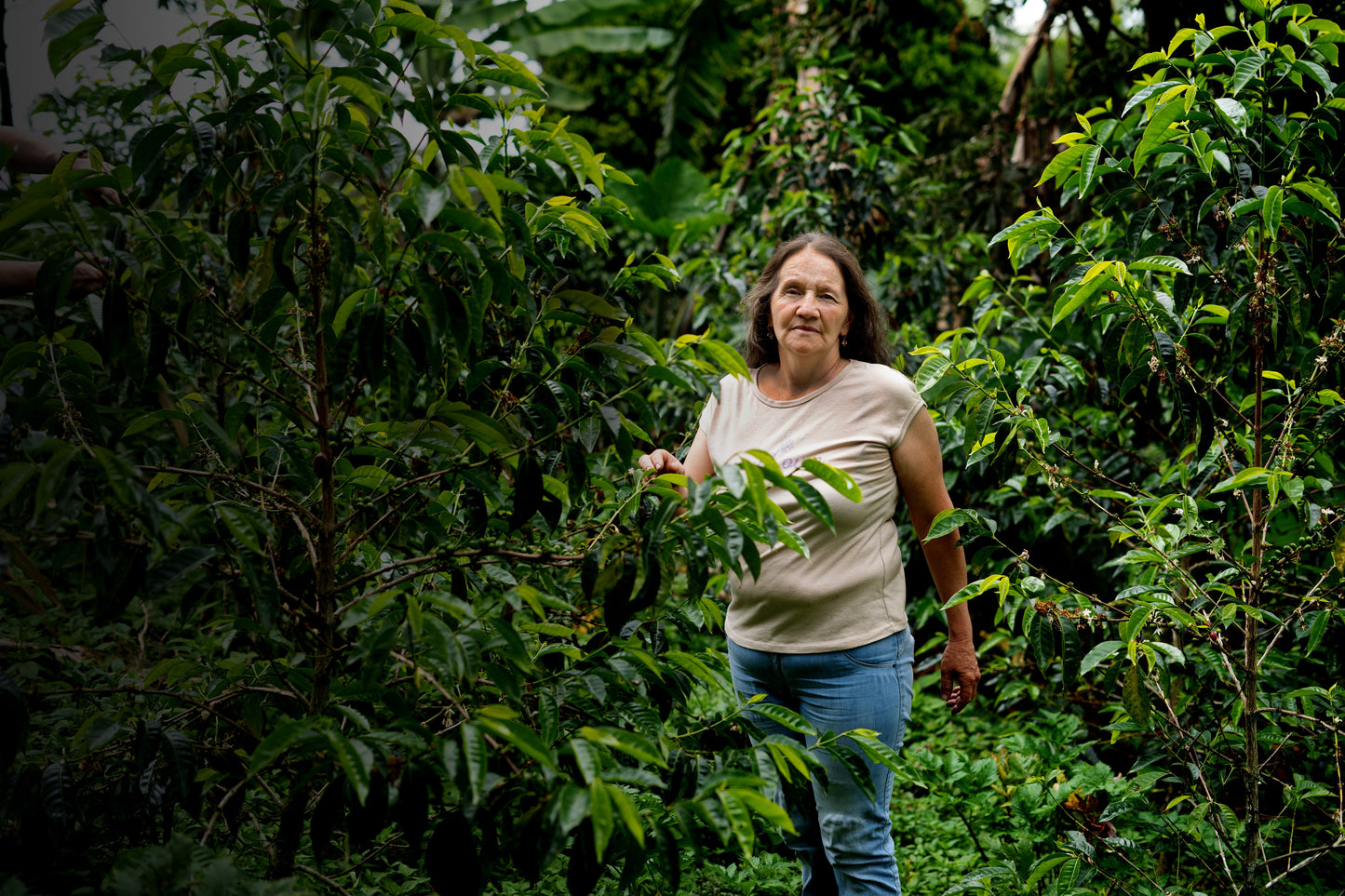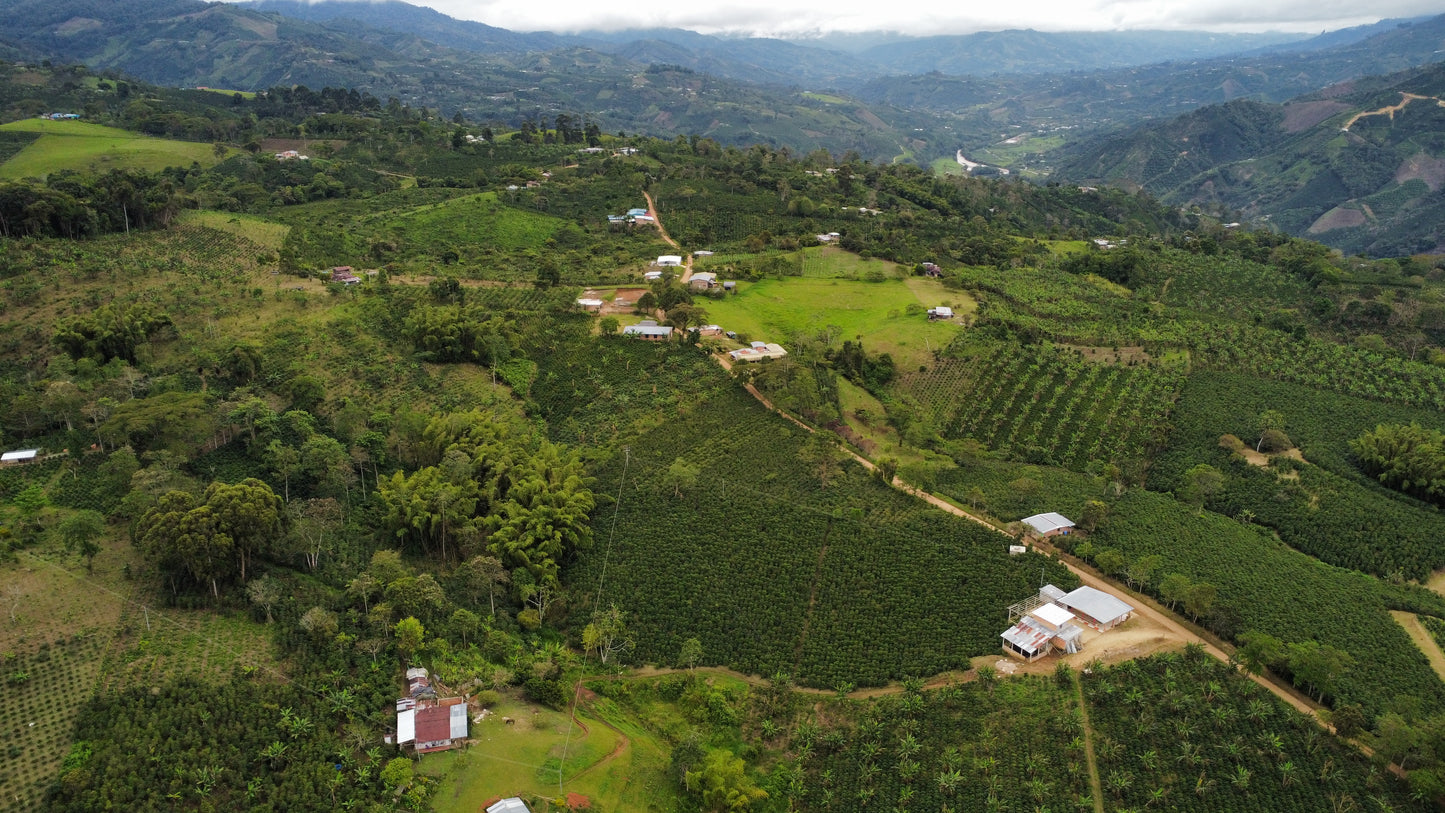El Silencio Red
El Silencio Red
COLOMBIA
REGION: Palestina, Huila
Altitude: 1 700 - 2 200 m a.s.l.
VARIETY: Pink Bourbon
PROCESS: Washed (Dual-phase fermentation)
ROAST: Filter
ACIDITY: ● ● ● ● ●
BODY: ● ● ● ● ●
SWEETNESS: ● ● ● ● ●
Couldn't load pickup availability
LEARN MORE
LEARN MORE
Grown in the lush mountains of Palestina, Huila, El Silencio Red showcases the vibrancy of the Pink Bourbon variety. Named for its vibrant red fruit flavour profile, this microlot is carefully processed using a dual-phase washed method, bringing out a bright, juicy cup with notes of red currant, grape, and blood orange. A shining example of Colombia’s New Coffee Triangle.
PROCESS: WASHED
This coffee employs a traditional washed method enhanced by dual-phase fermentation, a process increasingly adopted in Colombia. Harvested cherries undergo an initial fermentation of 6–12 hours in their whole form. They are then depulped and subjected to a secondary fermentation in open tanks, with mucilage intact, for 18–24 hours. The beans are subsequently fully washed and dried, yielding a clean and nuanced cup profile.
VARIETY: PINK BOURBON
Pink Bourbon is an Ethiopian landrace variety celebrated for its bright, vibrant acidity and delicate fruity notes, often reminiscent of cherries or berries. Primarily cultivated in Colombia's high-altitude regions, such as Huila, its ideal growing conditions—cool temperatures and steady rainfall—help to develop its complex flavours. Over the years, Pink Bourbon has gained significant attention in the specialty coffee industry, with select lots earning high scores in prestigious competitions like the Colombia Cup of Excellence. Its unique characteristics have made it a highly sought-after variety among coffee enthusiasts and professionals alike.
TRACEABILITY:
PALESTINA
Palestina is a municipality in the southwestern region of the Huila Department in Colombia. Nestled within the Andean highlands, it is characterised by its mountainous terrain and temperate climate, ideal for agriculture. The local economy is predominantly driven by coffee cultivation, with farmers also producing crops such as sugarcane, granadilla, tomato de árbol, pitahaya, and lulo.
Palestina serves as a gateway to the Cueva de los Guácharos National Natural Park, Colombia's first national park. Renowned for its rich biodiversity, unique ecosystems, and fascinating geological features, the park is home to numerous rivers, including the Suaza River, which flows into the Magdalena River. Visitors can explore spectacular waterfalls, natural pools, and an array of plant species such as orchids, bromeliads, mosses, and ferns, making it a vital intersection of Andean and Amazonian ecosystems.
HUILA
Huila, located in southern Colombia, is a region rich in history, culture, and coffee excellence. This department was originally home to indigenous groups such as the Pijao, Andaquí, Yalcones, and Paeces, whose cultural heritage is evident in the renowned San Agustín Archaeological Park. This UNESCO World Heritage site is one of Latin America’s most significant pre-Columbian archaeological locations.
Huila is one of Colombia’s most important coffee-producing regions, especially noted for its specialty coffees. The region’s unique combination of high altitudes (often ranging from 1,200 to 1,800 meters), volcanic soils, and a variety of microclimates creates ideal conditions for growing coffee with rich and complex flavour profiles. The department’s coffee received Protected Geographical Indication (PGI) status in 2013, underscoring its exceptional quality on the international stage. The local coffee industry consists mainly of small-scale farmers who continue to use traditional cultivation methods. For many families in Huila, coffee isn’t just a crop—it’s a way of life and a cornerstone of cultural identity.
Huila’s culture is deeply intertwined with music, dance, and vibrant celebrations. The Bambuco National Festival, held annually in Neiva, the department’s capital, celebrates Huila’s musical heritage with performances of bambuco—a traditional Andean rhythm—and the famous sanjuanero huilense dance.
The department’s geography is diverse, ranging from the high Andean peaks like Nevado del Huila (one of Colombia’s tallest volcanoes), to the tropical valleys along the Magdalena River, Colombia’s longest river. The climate varies accordingly, with cooler temperatures in the highlands and warm, tropical conditions in the lowland valleys, which support a wide range of agricultural products including coffee, cacao, fruit, and rice. Huila also hosts the Tatacoa Desert, famous for its red and gray rock formations and its stargazing appeal, drawing visitors from around the world.
With its Protected Geographical Indication status, internationally recognized quality, and commitment to traditional farming methods, Huila stands as a beacon in the Colombian coffee landscape. Its rich cultural and environmental diversity not only supports an exceptional coffee-growing industry but also makes Huila one of Colombia’s most unique and intriguing regions.









